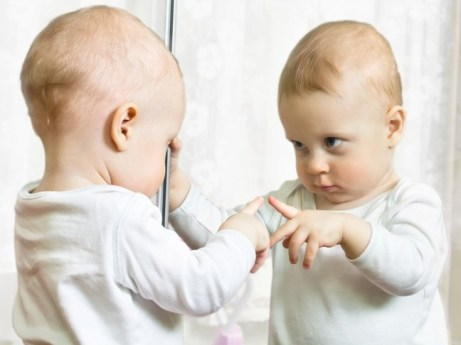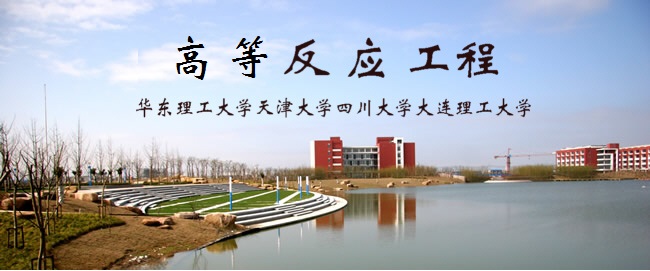
当前课程知识点:英语电影与文化 > Unit 12 The English Patient: Critical Analysis > Unit 12 The English Patient: Critical Analysis > Unit 10 Film and Psychoanalysis
BY NASRULLAH MAMBROL on APRIL 22, 2016
Lacan‘s reinterpretation of Freud, with the central focus on language, brought about a post-structuralist turn to psychoanalytic theory. In his paper titled Mirror Stage (1949), Lacan expounds the concept of the mirror stage that occurs between 6-18 months of a child’s development, when the child begins to draw rudimentary distinction between the self and the other, as it encounters its image in the mirror. Before this,.the child is from birth in the Real stage, driven by needs and lived in unity with the mother. With the Mirror Stage, the child attains the first realization of its bodily autonomy. Thus begins the lifelong process of identifying the self in terms of the other- man/woman, West/East, and so on.


The image reflected according to Lacan is the “Ideal I” – the stable and autonomous version which the child does not experience in itself and hence yearns to be the other. This quest, Lacan says, will never be fulfilled and may lead to anxiety, neurosis, and psychosis. The child also realizes that, prior to this stage, its body was in “bits and pieces” and realizes the danger of returning to that stage. The mirror stage also marks the beginning of a gradual transition from the Imaginary/pre-linguistic stage (where the child does not recognize the demarcation between itself and the objects in the world) and the symbolic stage of language acquisition, In the imaginary stage, the Self is a unified, coherent whole, not fragmented or mediated by differences; however, on the realization of the imminent presence of the Other, the Self is divided, and this marks the breakdown of the comforting imaginary condition, and it thrusts the child into the Symbolic order- the world of predefined social roles and gender differences, the world of subjects and objects, the world of language.
From https://literariness.org/2016/04/22/lacans-concept-of-mirror-stage/ 2021-1-25
-1.1 Overview
--Video
-1.2 Mise-en-scène: setting
--Video
-1.3 Mise-en-scène: lighting
--Video
-1.4 Mise-en-scène: character appearance
--Video
-1.5 Mise-en-scène: performance
--Video
-1.6 Screen space and composition
--Video
-1.7 Case study
--Video
-Unit1 Questions for discussion
-Unit 1 单元测试
-2.1 Introduction of cinematography
--Video
-2.2 Cinematography: angle of framing
--Video
-2.3 Cinematography: camera distance
--Video
-2.4 Cinematography: mobile framing
--Video
-2.5 Case study
--Video
-Unit 2 Questions for discussion
-Unit 2 单元测试
-3.1 Overview
--Video
-3.2 Openings, closings, and story development
--Video
-3.3 Range of story information: restricted or unrestricted
--Video
-Unit 3 Questions for discussion
-Unit 3 单元测试
-4.1 Overview
--Video
-4.2 Editing and speed of narrative
--Video
-4.3 Chronology and continuity editing
--Video
-4.4 Flashbacks and editing
--Video
-Unit 4 Questions for Discussion
-Unit 4 单元测试
-5.1 Overview
--Video
-5.2 What is semiotics?
--Video
-5.3 Christian Metz
--Video
-5.4 Roland Barthes (Part 1)
--Video
-5.5 Roland Barthes (Part 2)
--Video
-5.6 Case study: 2001: A Space Odyssey
--Video
-Unit 5 Questions for Discussion
-Unit 5 单元测试
-6.1 Overview
--Video
-6.2 Origins of film ideology
--Video
-6.3 Media and technology
--Video
-6.4 Cultural hegemony and counterhegemony
--Video
-6.5 Case study: Star Trek
--Video
-Unit 6 Questions for discussion
-Unit 6 单元测试
-7.1 Overview
--Video
-7.2 Woman and film
--Video
-7.3 Feminist film theory and practice
--Video
-7.4 Case study: Three Billboards Outside Ebbing, Missouri
--Video
-7.5 Masculinity
--Video
-7.6 Queer Cinema
--Video
-Unit 7 Questions for discussion
-Unit 7 单元测试
-8.1 Overview
--Video
-8.2 Race and racism
--Video
-8.3 Stereotypes of racial representation
--Video
-8.4 Whiteness
--Video
-8.5 Case study: Rabbit-Proof Fence
--Video
-Unit 8 Questions for discussion
-Unit 8 单元测试
-9.1 Overview
--Video
-9.2 Edward Said and Orientalism
--Video
-9.3 Cultural Imperialism
--Video
-9.4 Self-orientation
--Video
-9.5 Case study I: Mulan
--Video
-9.6 Case study II: M Butterfly
--Video
-Unit 9 Questions for discussion
-Unit 9 单元测试
-10.1 Overview
--Video
-10.2 Early Background
--Video
-10.3 Jacques Lacan
--Video
-10.4 Laura Mulvey
--Video
-10.5 Case Study: Shutter Island
--Video
-Unit 10 Questions for discussion
-Unit 10 单元测试
-Unit 10 Film and Psychoanalysis
-11.1 Overview
--Video
-11.2 Story
--Video
-11.3 Character: the enigmatic English patient
--Video
-11.4 Mise-en-scène: setting
--Video
-11.5 Narrative
--Video
-11.6 Music
--Video
-Unit 11 Questions for discussion
-Unit 11 单元测试
-Unit 11 The English Patient: Form and Narrative
-12.1 Signs and Symbols
--Video
-12.2 Nationalism in The English Patient
--Video
-12.3 Almasy as the misogynist and Katharine as a feminist
--Video
-12.4 Kip as the Other
--Video
-Unit 12 Questions for discussion
-Unit 12 单元测试






